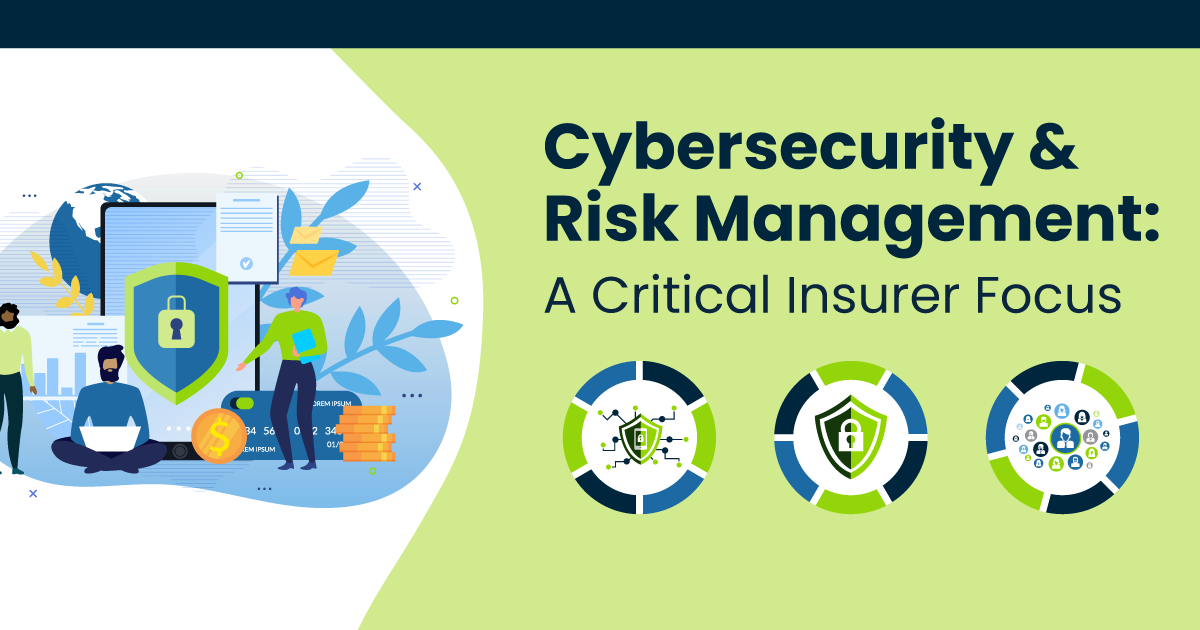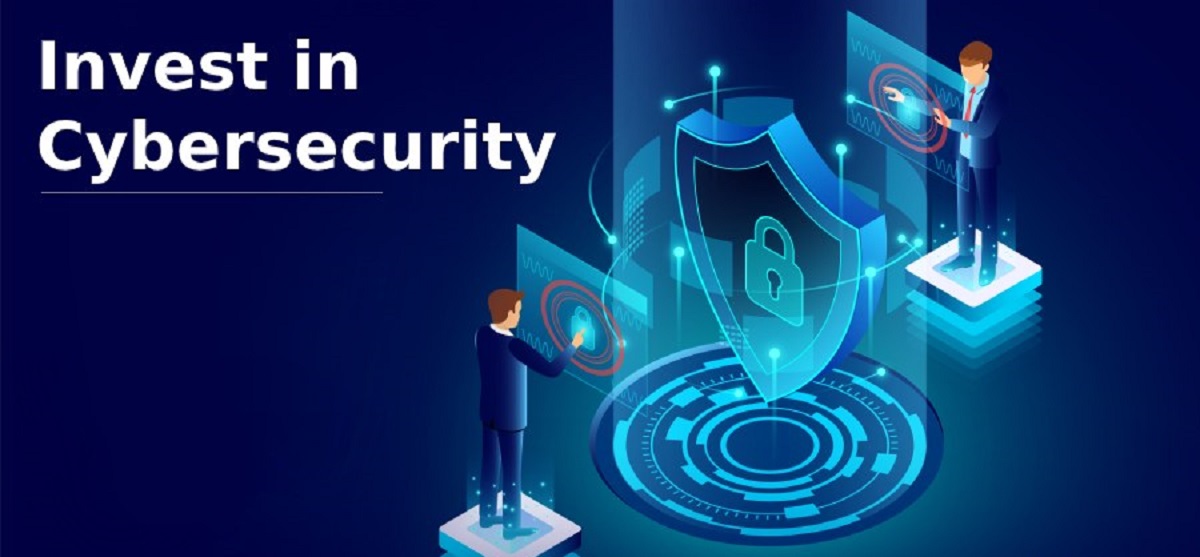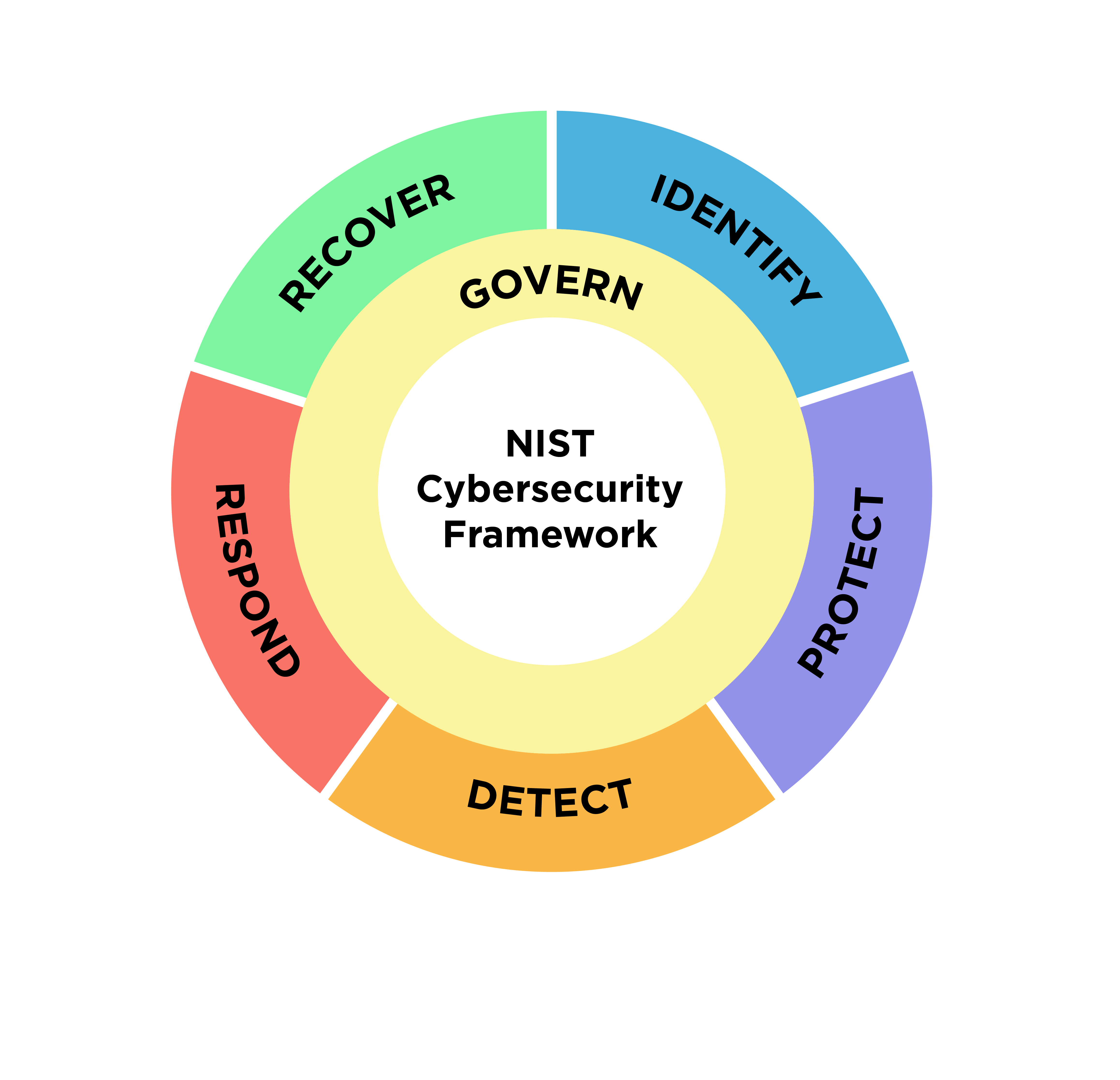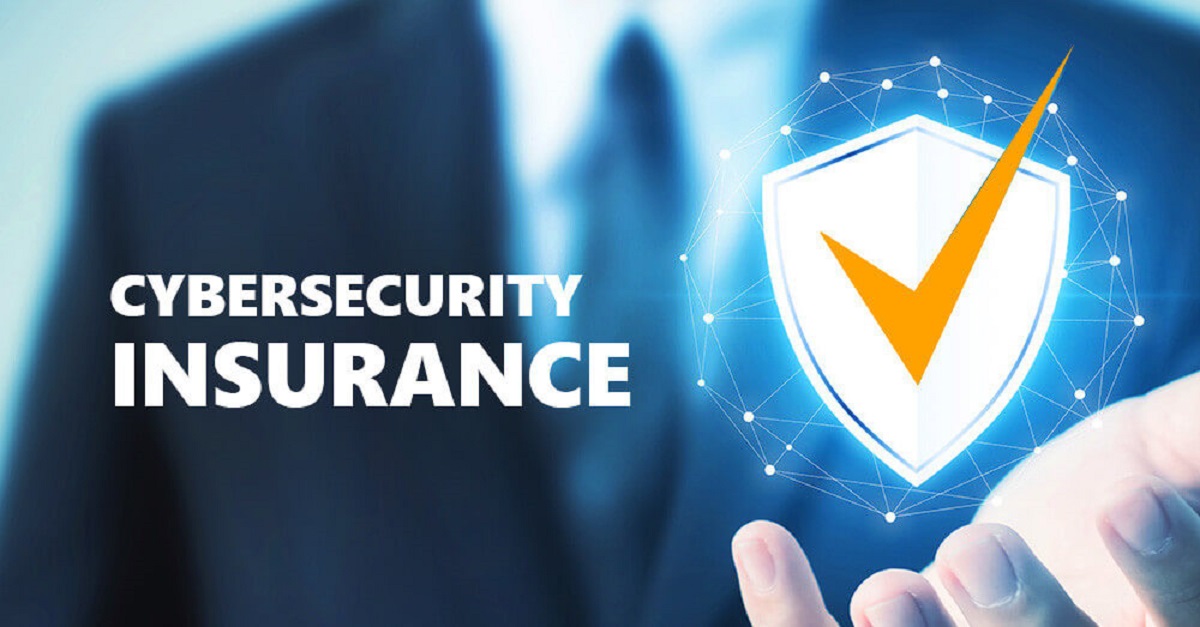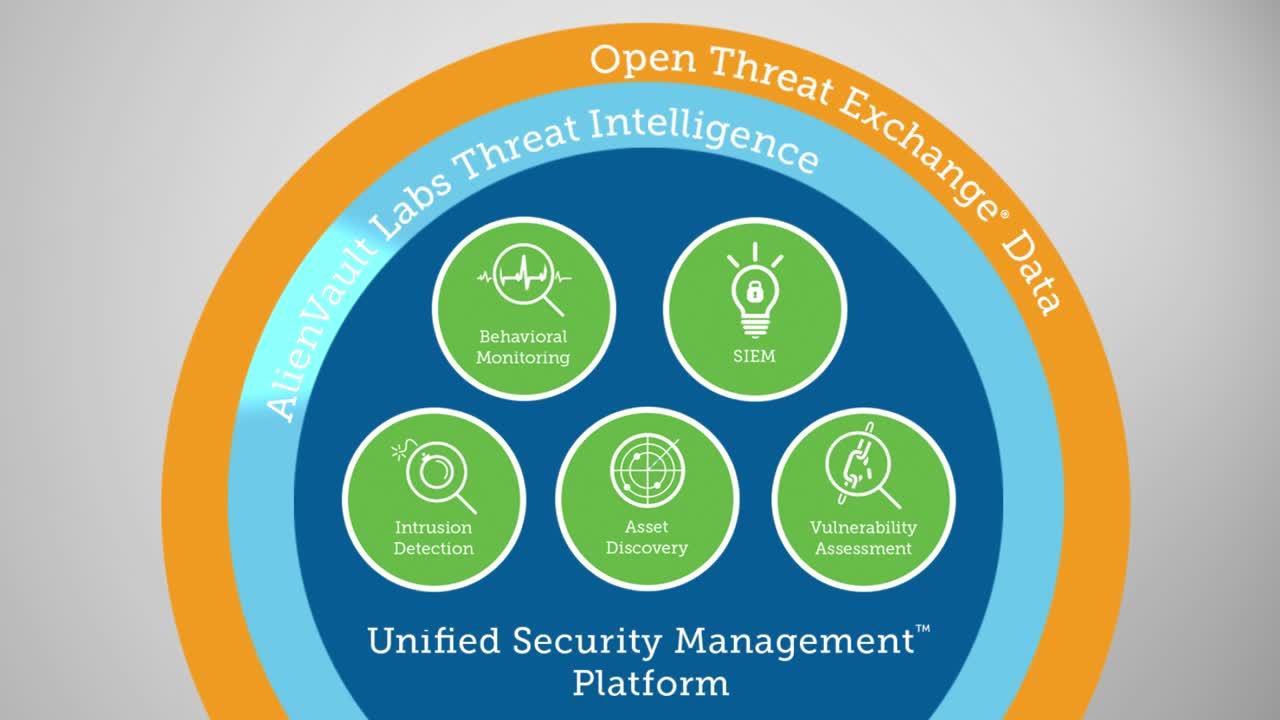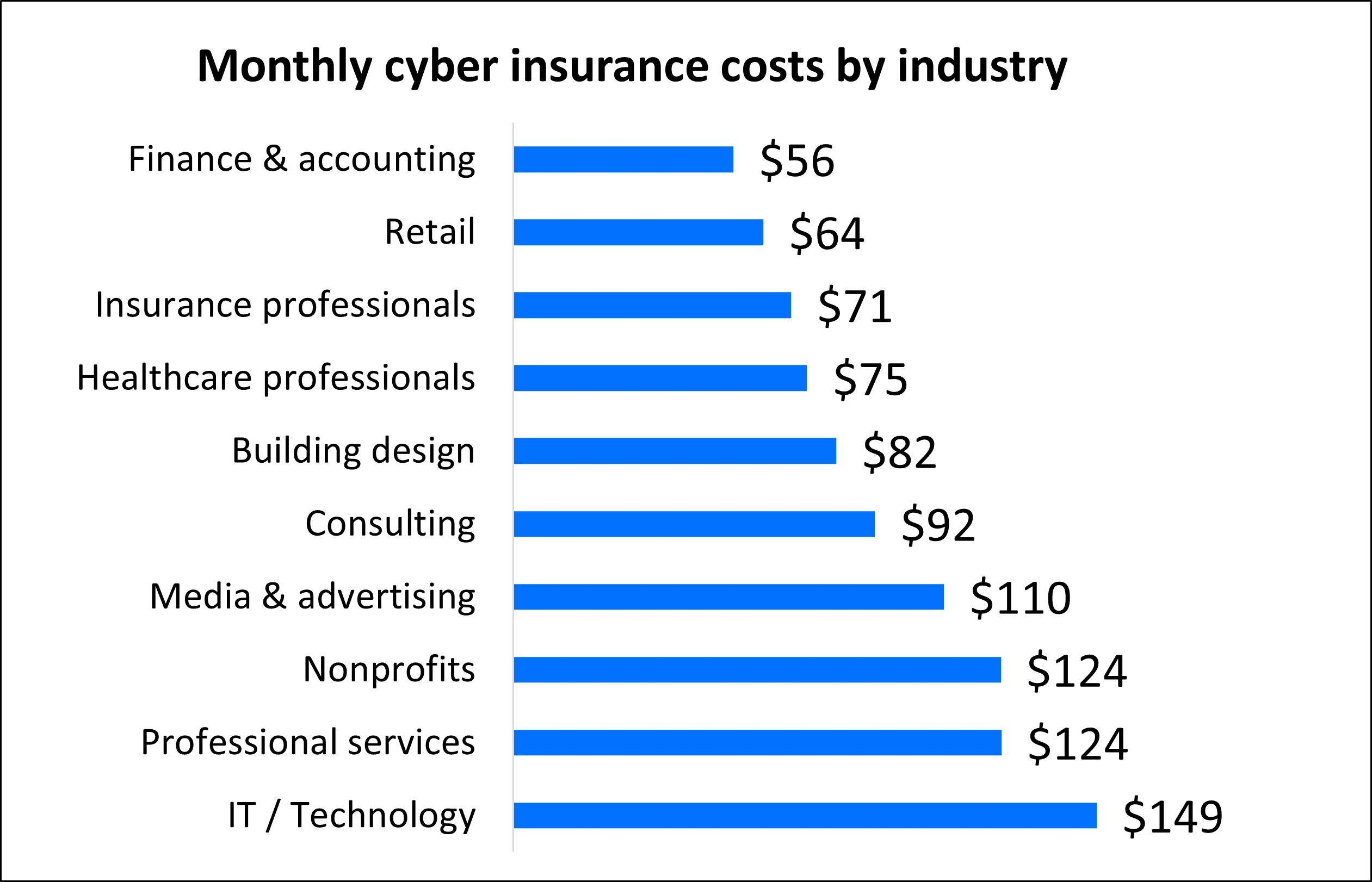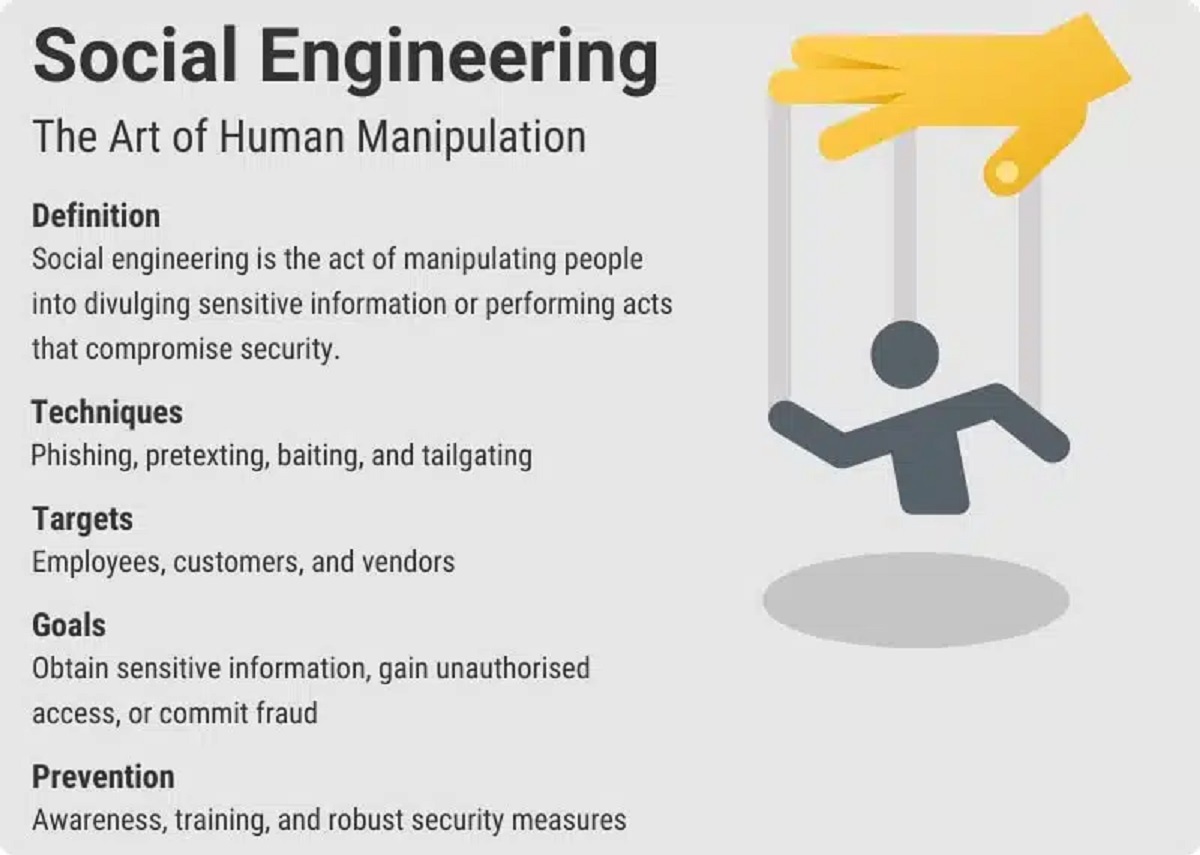Introduction
Welcome to the world of cybersecurity, a rapidly evolving field dedicated to protecting digital assets and information from unauthorized access, use, and threats. With the increasing reliance on technology in our personal and professional lives, ensuring the security of our online activities has become a paramount concern.
In today’s interconnected world, cybersecurity measures are crucial for individuals, businesses, and governments alike. The consequences of a cyberattack can be devastating, ranging from financial loss and reputational damage to the compromise of sensitive data and even potential threats to national security. Therefore, understanding the different types of cybersecurity is essential for implementing robust and effective protection strategies.
Cybersecurity encompasses numerous dimensions, each targeting specific areas of vulnerability and implementing specialized defenses. In this article, we will explore some of the key types of cybersecurity and their significance in safeguarding digital systems and data.
From network security to application security, cloud security to endpoint security, and data security to identity and access management, each aspect plays a vital role in the overall protection of information and systems from cyber threats. Additionally, areas such as mobile security, email security, behavioral analytics, and incident response and management are also critical components of a comprehensive cybersecurity infrastructure.
Understanding the different types of cybersecurity is essential not only for IT professionals and security experts but for anyone using digital technology in their daily lives. By familiarizing ourselves with these concepts, we can better protect our personal data, mitigate risks, and contribute to a safer online environment.
Throughout this article, we will delve into each type of cybersecurity, exploring its purpose, key strategies, and real-world examples. By examining the unique challenges and solutions within each domain, we can gain a comprehensive understanding of the complex world of cybersecurity and the importance of adopting proactive measures to defend against potential threats.
Network Security
Network security is a fundamental aspect of cybersecurity that focuses on protecting the integrity, confidentiality, and availability of a computer network. A network comprises interconnected devices, such as computers, servers, routers, and switches, that enable the transfer of data and facilitate communication.
The primary objective of network security is to prevent unauthorized access, unauthorized modification, or disruption of network resources and data. To achieve this, network security employs various technologies, tools, policies, and procedures.
One of the key components of network security is firewalls. Firewalls act as a barrier between internal and external networks, filtering incoming and outgoing network traffic based on predetermined rules. They monitor and control network communications, allowing legitimate data while blocking unauthorized access attempts.
Another essential aspect of network security is the use of secure communication protocols, such as Transport Layer Security (TLS) and Virtual Private Networks (VPNs). These protocols encrypt network traffic, ensuring that data transmitted between devices remains confidential and protected from interception or tampering.
Intrusion Detection and Prevention Systems (IDPS) are also crucial in network security. IDPS monitor network traffic, looking for suspicious activity or potential security breaches. They can detect and respond to security incidents in real-time, helping to mitigate the impact of attacks.
Network security also involves implementing strong authentication mechanisms, such as passwords, biometrics, and two-factor authentication, to ensure that only authorized individuals can access network resources. Additionally, regular network vulnerability assessments and penetration testing are conducted to identify and remediate weaknesses in the network infrastructure.
Over the years, network security has become increasingly complex due to the growing number of connected devices and the rise of remote work and cloud computing. As a result, technologies such as Network Segmentation and Network Access Control (NAC) have gained prominence. Network Segmentation divides a network into multiple smaller segments, limiting the impact of a security breach. NAC, on the other hand, provides access control and enforcement policies, allowing organizations to define who can connect to the network and what resources they can access.
Overall, network security plays a critical role in safeguarding the integrity and availability of network resources. By implementing robust network security measures, organizations can reduce the risk of data breaches, unauthorized access, and service disruptions, ensuring the smooth and secure operation of their digital infrastructure.
Application Security
Application security is a branch of cybersecurity that focuses on protecting software applications from threats and vulnerabilities that could compromise their integrity and expose sensitive data. As more businesses and individuals rely on various applications for their day-to-day activities, ensuring the security of these applications has become paramount.
Applications can be susceptible to a wide range of security risks, including malicious code injections, unauthorized access to sensitive data, and software vulnerabilities. Application security aims to identify and mitigate these risks through a combination of secure coding practices, robust testing, and ongoing monitoring.
One of the key elements of application security is secure coding. This involves following established best practices and guidelines when developing software applications to minimize vulnerabilities. Developers should adhere to secure coding principles, such as input validation, output encoding, and proper handling of errors and exceptions, to prevent common attack vectors like SQL injection or cross-site scripting (XSS).
Another crucial aspect of application security is conducting regular security testing. This includes performing vulnerability assessments, penetration testing, and code reviews to identify any weaknesses or vulnerabilities in the application. By proactively identifying and fixing these issues, organizations can enhance the security posture of their applications.
Secure authentication and authorization mechanisms are also vital in application security. Implementing strong password policies, multi-factor authentication, and role-based access control can help ensure that only authorized users can access sensitive features and data within the application.
Application security also involves protecting against known software vulnerabilities by keeping applications up to date with patches and security updates. Employing robust software development frameworks and libraries and regularly scanning applications for known security vulnerabilities can also help prevent attacks.
Furthermore, ongoing monitoring and logging of application activities are essential for detecting and responding to security incidents. By implementing robust logging mechanisms, organizations can track and analyze application behavior, allowing them to identify and respond to potential threats or breaches in a timely manner.
With the increasing adoption of cloud-based applications and mobile applications, application security has become even more critical. In these environments, additional measures such as secure API integration, encryption of data in transit and at rest, and secure communication channels are necessary to protect against threats.
Overall, application security is a vital component of a comprehensive cybersecurity strategy. By integrating secure coding practices, conducting regular security testing, implementing strong authentication mechanisms, and staying vigilant with updates and monitoring, organizations can minimize the risk of application vulnerabilities and safeguard their data and systems.
Cloud Security
Cloud computing has revolutionized the way businesses and individuals store, access, and manage data. However, with the adoption of cloud services comes the need for robust cloud security measures to protect sensitive information and maintain the integrity of cloud-based systems.
Cloud security encompasses a range of practices, technologies, and policies designed to safeguard data, applications, and infrastructure hosted in the cloud. It addresses the unique challenges associated with cloud computing, including data breaches, unauthorized access, data loss, and service disruptions.
One of the key considerations in cloud security is data protection. This involves implementing strong encryption methods to ensure that data is encrypted both in transit and at rest within the cloud environment. Encryption prevents unauthorized access to sensitive data and provides an additional layer of security.
Another critical aspect of cloud security is access management. Organizations must implement robust access controls and authentication measures to ensure that only authorized individuals can access cloud resources. This includes using strong passwords, multi-factor authentication, and role-based access control (RBAC) to limit access based on job roles and responsibilities.
Cloud providers also play a significant role in ensuring the security of cloud environments. They are responsible for implementing robust physical and environmental controls in their data centers, including firewalls, intrusion detection systems, and security monitoring. Customers must carefully choose reputable and reliable cloud service providers that prioritize security and adhere to strict security standards and certifications.
Additionally, organizations should carefully evaluate and control the permissions and privileges granted to users within the cloud environment. Limiting user privileges, regularly reviewing access rights, and implementing least privilege principles can help reduce the risk of unauthorized activities and potential insider threats.
Regular monitoring and auditing of cloud environments are crucial for detecting and responding to security incidents. Monitoring tools can provide real-time visibility into cloud activities, allowing organizations to identify and investigate any suspicious behavior or anomalies. Auditing helps ensure compliance with regulatory standards and provides an audit trail of activities for forensic investigations if needed.
Lastly, backup and disaster recovery strategies are essential components of cloud security. Organizations should regularly back up their data and test the restoration process to ensure that data is recoverable in the event of a security incident or data loss. This helps to reduce downtime and maintain business continuity.
As cloud computing continues to evolve and become more prevalent, organizations must prioritize cloud security to protect their valuable data and applications. By implementing robust encryption, access management, monitoring, and disaster recovery measures, they can leverage the benefits of the cloud while minimizing the associated risks.
Endpoint Security
Endpoint security is a critical aspect of cybersecurity that focuses on protecting the various endpoints, such as laptops, desktops, mobile devices, and servers, that connect to a network. Endpoints are often the targets of cyber-attacks and can serve as entry points for malicious activities, making it vital to implement robust security measures at the endpoint level.
Endpoints are vulnerable to various security risks, including malware infections, unauthorized access, and data breaches. Endpoint security aims to prevent and detect these threats through a combination of proactive measures, such as antivirus software, firewall protection, and encryption.
Antivirus software is a fundamental component of endpoint security. It scans files and processes on endpoints, detects and removes known malware, and prevents the execution of malicious code. Regular updates and patches are crucial to keeping antivirus software effective against emerging threats.
Firewall protection is another essential element of endpoint security. Firewalls monitor and control network traffic to and from the endpoint, filtering out malicious connections and unauthorized access attempts. Firewalls can be implemented at both the software and hardware levels for comprehensive protection.
Encryption plays a crucial role in endpoint security, particularly when it comes to protecting sensitive data. Encryption converts data into an unreadable form, ensuring that even if it is intercepted, it cannot be accessed without the correct decryption key. This is especially important for devices that may be at risk of loss or theft.
Another aspect of endpoint security is the use of strong authentication mechanisms. Implementing password policies, multi-factor authentication, and biometric authentication methods can help prevent unauthorized access to endpoints and ensure that only legitimate users can access sensitive data and resources.
Endpoint security also involves continuously monitoring and analyzing endpoint activities for any signs of malicious or suspicious behavior. Endpoint detection and response (EDR) solutions can provide real-time visibility into endpoint activities, allowing for immediate detection and response to security incidents.
Additionally, patch management is crucial to endpoint security. Regularly updating and patching software applications and operating systems helps close security vulnerabilities and prevent exploitation by attackers. Automated patch management tools can streamline this process and ensure that endpoints are always up to date.
Training and user awareness are key components of endpoint security. Educating users about best security practices, the risks associated with phishing attacks, and the importance of promptly reporting any suspicious activities can significantly enhance the security posture of endpoints.
Endpoint security is vital for safeguarding against threats that specifically target endpoints and can potentially compromise the entire network. By implementing a multi-layered approach that includes antivirus software, firewalls, encryption, strong authentication, monitoring, and user education, organizations can strengthen their endpoint security and protect sensitive data from potential breaches.
Data Security
Data security is a crucial aspect of cybersecurity that involves protecting sensitive information from unauthorized access, use, disclosure, alteration, or destruction. With the increasing amount of data being generated and stored by individuals and organizations, ensuring the security of this data has become paramount.
Data security encompasses various measures and strategies to safeguard data throughout its lifecycle. This includes data classification, encryption, access controls, and data backup and recovery processes.
Data classification is the first step in data security. It involves categorizing data based on its sensitivity and assigning appropriate security controls and access levels. By understanding the value and sensitivity of data, organizations can prioritize their security efforts and ensure that data is adequately protected.
Encryption is a critical component of data security. Through encryption, data is transformed into an unreadable form, ensuring that even if it is intercepted, it cannot be accessed without the correct decryption key. Encryption should be applied both during data transmission (in transit) and when data is stored (at rest) to provide comprehensive protection.
Access controls are essential for data security. Implementing strong authentication mechanisms, such as password policies and multi-factor authentication, helps ensure that only authorized individuals can access sensitive data. Role-based access control (RBAC) assigns specific permissions and privileges to users based on their roles and responsibilities, further limiting access to data.
Data backup and recovery mechanisms are vital for data security. Regularly backing up data and storing it in secure offsite locations or in the cloud ensures that data can be restored in the event of a security incident or data loss. These backups should be tested regularly to verify their integrity and effectiveness.
Auditing and monitoring are crucial for data security. Regularly reviewing and analyzing data access logs and activity trails can help organizations detect and respond to any unauthorized or suspicious behavior promptly. Intrusion detection and prevention systems, as well as security information and event management (SIEM) solutions, can provide real-time monitoring and alerts for potential data breaches.
Data security also involves implementing robust security measures for data storage and transfer. Secure file storage systems, secure socket layer (SSL) protocols for data transmission, and secure cloud storage solutions are essential components of a comprehensive data security strategy.
Furthermore, organizations must comply with relevant data protection and privacy regulations. This includes implementing appropriate security controls, obtaining consent for data collection and processing, and notifying individuals in the event of a data breach.
Overall, data security is crucial for protecting sensitive information from unauthorized access, ensuring data integrity, and maintaining customer trust. By implementing robust data classification, encryption, access controls, backup processes, and monitoring mechanisms, organizations can mitigate the risks associated with data breaches and protect their valuable data assets.
Identity and Access Management
Identity and access management (IAM) is a critical aspect of cybersecurity that focuses on controlling and managing the identities and access privileges of individuals within an organization. IAM ensures that only authorized users have access to relevant resources while protecting sensitive data and systems from unauthorized access and potential security breaches.
IAM involves several key components, including user provisioning, authentication, authorization, and identity lifecycle management.
User provisioning refers to the process of creating, modifying, and managing user accounts and their access privileges. It includes granting appropriate permissions based on job roles, responsibilities, and organizational requirements, as well as deprovisioning or removing access when no longer needed.
Authentication is the process of verifying the identity of users attempting to access a system or resource. This can be achieved through various methods, including passwords, biometric authentication (such as fingerprints or facial recognition), and multi-factor authentication (using multiple authentication factors, such as something the user knows, has, or is).
Authorization controls what actions or resources a user can access or perform within the system. This is typically based on the principle of least privilege, where users are granted the minimum level of access necessary to perform their tasks effectively.
Identity lifecycle management encompasses the entire lifecycle of a user’s identity within an organization. This includes onboarding new users, managing their access rights and permissions, and offboarding or deactivating users when they leave the organization. Proper identity lifecycle management helps ensure that access to resources is up to date and in alignment with organizational needs.
IAM also involves implementing secure and centralized user directories or identity repositories. These directories store and manage user information, including their authentication credentials, access privileges, and other relevant attributes. By centralizing user identities, organizations can streamline access management processes and enforce consistent security policies.
IAM solutions often include identity governance features, which provide additional layers of control and security. Identity governance ensures that appropriate controls and oversight are in place to monitor and manage user access, detect policy violations, and enforce compliance with regulatory requirements.
Effective IAM helps organizations mitigate the risks associated with unauthorized access, insider threats, and data breaches. It increases security by ensuring that only authenticated and authorized users can access sensitive resources, while providing a seamless and efficient user experience.
With the rise of cloud computing and the increasing adoption of mobile devices, IAM has evolved to encompass the management of identities and access across various platforms and environments. This includes integrating IAM solutions with cloud services, implementing single sign-on (SSO) functionality, and applying mobile device management (MDM) solutions to secure access from mobile devices.
Overall, IAM is a critical component of a comprehensive cybersecurity strategy. By carefully managing user identities, provisioning and deprovisioning access, implementing strong authentication and authorization controls, and enforcing consistent security policies, organizations can significantly enhance their security posture and protect their critical data and resources.
Mobile Security
Mobile devices have become an integral part of our lives, serving as gateways to a wealth of information and online services. However, their widespread use and portability make them prime targets for cyber-attacks. Mobile security aims to protect mobile devices, data, and applications from unauthorized access, malware, and other mobile-specific threats.
Mobile security encompasses a range of measures and best practices for securing smartphones, tablets, and other mobile devices. It involves protecting both the devices themselves and the data stored on them, as well as ensuring secure communication with networks and external services.
One fundamental aspect of mobile security is device management. This includes implementing strong authentication mechanisms, such as passwords, PINs, or biometric authentication (fingerprint or facial recognition), to prevent unauthorized access to the device. Additionally, enabling device encryption can help safeguard data in case the device is lost or stolen.
Mobile application security is another critical consideration. Mobile devices often rely on various applications to perform tasks, ranging from email and messaging to banking and social media. Ensuring the security of these applications involves downloading from trusted sources (such as official app stores), applying regular updates, and being cautious of granting unnecessary permissions.
Network security plays a vital role in mobile security. Using secure networks when connecting to the internet is crucial to prevent eavesdropping and man-in-the-middle attacks. Employing virtual private network (VPN) technology can add an extra layer of encryption and protect data transmission over insecure networks.
Applying mobile device management (MDM) solutions is an effective way to enhance mobile security in enterprise settings. MDM enables IT teams to enforce security policies, remotely wipe or lock devices, and manage application installation and updates. This helps organizations maintain control over sensitive data and enforce security standards across their mobile devices.
Mobile security also involves being cautious of phishing attempts, malicious apps, and suspicious websites. Understanding potential threats and educating users about safe mobile practices, such as avoiding unknown links, practicing good password hygiene, and being mindful of public Wi-Fi networks, can significantly reduce the risk of mobile-related cyber-attacks.
With the increasing reliance on mobile payments and digital wallets, securing financial transactions is paramount. Implementing secure payment technologies, such as tokenization, ensures that transactions are encrypted and protected from interception or unauthorized access.
As the mobile landscape continues to evolve, emerging technologies such as biometrics, behavioral analytics, and mobile threat defense are being integrated into mobile security strategies. These technologies enhance authentication, detect suspicious behavior, and provide real-time threat detection and response.
In summary, mobile security is crucial to protect personal and business data in an increasingly mobile-centric world. By implementing best practices such as device management, secure application usage, network security measures, and user education, individuals and organizations can ensure a safer mobile experience and mitigate the risks associated with mobile-related cyber threats.
Email Security
Email has become a primary communication channel for individuals and organizations, making it a common target for cyber threats. Email security focuses on protecting email communication from unauthorized access, phishing attacks, malware, and other email-related vulnerabilities.
One of the crucial elements of email security is implementing robust spam filters and email scanning technologies. These filters and scanners help detect and block unsolicited or malicious emails, including phishing attempts and emails containing malware or malicious links.
Email encryption is another important aspect of email security. Encryption ensures that the contents of an email are only readable by the intended recipient. It prevents unauthorized interception or tampering of sensitive information and helps maintain the confidentiality of email communication.
Implementing strong authentication mechanisms, such as two-factor authentication (2FA) or multi-factor authentication (MFA), is essential for email security. These mechanisms provide an extra layer of security and ensure that only authorized individuals can access email accounts and sensitive information.
Another crucial consideration in email security is user awareness and education. Users should be trained to identify and report suspicious emails, including phishing attempts or emails with malicious attachments or links. Regular security awareness training helps users understand the risks and best practices associated with email security.
Email security also involves securing email servers and network infrastructure. It includes applying security patches and updates, using firewalls and intrusion detection systems to monitor and control network traffic, and implementing secure email gateways to filter out spam and malicious content.
Anti-malware and anti-phishing solutions are vital components of email security. These solutions scan incoming and outgoing emails for known malware signatures or phishing attempts, helping to identify and block potentially malicious content.
To combat Business Email Compromise (BEC) attacks, organizations should implement email authentication protocols such as DomainKeys Identified Mail (DKIM), Sender Policy Framework (SPF), and Domain-based Message Authentication, Reporting, and Conformance (DMARC). These protocols verify the authenticity of sender domains and help prevent email spoofing and phishing.
Regular monitoring and auditing of email activities can help detect suspicious behavior or abnormal email patterns. By analyzing email logs and monitoring for unusual email activities, organizations can identify potential security incidents and respond promptly.
Data loss prevention (DLP) measures are important for email security, especially when it comes to protecting sensitive or confidential information from being unintentionally or maliciously shared via email. DLP solutions can monitor and block the transmission of sensitive data, helping to prevent data breaches or compliance violations.
In summary, email security is crucial to protect sensitive information, prevent phishing attacks, and maintain the integrity of email communication. By implementing robust authentication mechanisms, utilizing encryption, educating users, employing anti-malware and anti-phishing solutions, and ensuring server and network security, organizations can enhance their email security posture and reduce the risks associated with email-related cyber threats.
Behavioral Analytics
Behavioral analytics is a powerful tool in the realm of cybersecurity that focuses on understanding and analyzing patterns of human behavior to detect anomalies and potential security threats. By examining user behavior within digital systems, organizations can identify unusual activities or deviations from normal behavior, helping to detect and mitigate cyber-attacks.
One of the primary applications of behavioral analytics is in user authentication and access management. By establishing baseline behavior patterns for individual users, such as typical login times, locations, and usage patterns, organizations can identify suspicious or anomalous behavior, such as unauthorized access attempts or abnormal usage patterns that may indicate a compromised account.
Behavioral analytics also plays a significant role in insider threat detection. By monitoring employees’ digital activities, organizations can detect unusual behavior, such as excessive data access or attempts to access unauthorized resources. This helps identify potential insider threats or compromised accounts that may pose a risk to sensitive data or network security.
Another application of behavioral analytics is in the detection of Advanced Persistent Threats (APTs) and other sophisticated cyber-attacks. By analyzing network traffic, user behavior, and system logs, organizations can identify unusual patterns that may indicate the presence of an attacker attempting to infiltrate or compromise the network. These patterns can include irregular data transfers, unusual communication patterns, or unauthorized activities.
Behavioral analytics can also be used to enhance fraud detection and prevention systems. By analyzing user behavior patterns and transaction histories, organizations can identify suspicious activities or patterns that deviate from normal customer behavior. This helps to identify and prevent fraudulent transactions, protecting both the organization and its customers.
Machine learning and artificial intelligence (AI) algorithms play a crucial role in behavioral analytics. These technologies enable organizations to process large volumes of data, identify patterns, and detect anomalies that may be indicative of a security threat. As these algorithms continuously learn and adapt, they become more proficient at identifying and responding to emerging threats.
However, it is important to balance the use of behavioral analytics with privacy concerns. Organizations must ensure that any monitoring or analysis of user behavior respects individual privacy rights and complies with applicable data protection regulations. Transparency and clear communication with users are essential to establish trust and maintain a positive user experience.
Ultimately, behavioral analytics provides organizations with an additional layer of defense against both external and internal threats. By analyzing and understanding user behavior within digital systems, organizations can identify anomalies and potential security risks, enabling timely detection, response, and mitigation of cyber-attacks.
Incident Response and Management
Incident response and management is a critical component of an effective cybersecurity strategy. It involves a systematic approach to detecting, responding to, and mitigating security incidents to minimize damage and restore normal operations as quickly as possible.
When a security incident occurs, whether it is a data breach, malware infection, or a network intrusion, a prompt and well-coordinated incident response is essential. The goal is to identify and contain the incident, investigate the cause, remediate vulnerabilities, restore systems and data, and learn from the incident to prevent future occurrences.
An effective incident response plan is crucial for managing security incidents. This plan outlines the roles and responsibilities of the incident response team, defines communication channels, establishes incident classification and severity levels, and provides a step-by-step process for responding to different types of incidents.
Incident response begins with detection. This involves monitoring systems, networks, and logs for any signs of unauthorized access, unusual activities, or indicators of compromise. Intrusion detection systems, security information and event management (SIEM) tools, and advanced threat intelligence can aid in the detection and alerting of potential security incidents.
Once the incident is detected, an immediate response is initiated. The first steps typically involve containing the incident to prevent further damage, such as isolating affected systems from the network and disabling compromised accounts or services. This helps to limit the impact and spread of the incident.
After containment, the incident response team conducts a thorough investigation to determine the cause, scope, and impact of the incident. This includes gathering and analyzing evidence, conducting forensic analysis, and identifying the vulnerabilities or weaknesses exploited by the attacker.
Once the investigation is complete, the incident response team proceeds with remediation. This involves patching vulnerabilities, removing malware, restoring systems from backups, and implementing additional security measures to prevent similar incidents from occurring in the future.
Communication is vital throughout the incident response process. Timely and accurate communication with stakeholders, including employees, customers, partners, and regulatory bodies, helps manage expectations, provide updates on the incident, and ensure transparency. Maintaining open lines of communication helps to build trust and mitigate the potential impact on reputation.
Post-incident analysis and lessons learned are crucial for ongoing improvement and prevention of future incidents. By conducting a thorough review of the incident response process, identifying areas for improvement, and implementing necessary changes, organizations can enhance their incident response capabilities and better protect against future security incidents.
Regular testing and simulation exercises, such as tabletop exercises or penetration testing, help evaluate the effectiveness of the incident response plan and ensure that the incident response team is well-prepared to handle real-world situations.
Overall, incident response and management is a critical component of cybersecurity readiness. By having a well-defined incident response plan, detecting and responding to incidents quickly, conducting thorough investigations, and continually improving response capabilities, organizations can effectively mitigate the impact of security incidents and minimize damage to their systems, data, and reputation.
Vulnerability Management
Vulnerability management is a crucial process in cybersecurity that focuses on identifying, assessing, prioritizing, and mitigating vulnerabilities in software, systems, and networks. By effectively managing vulnerabilities, organizations can reduce the risk of exploitation by malicious actors and enhance the security of their digital infrastructure.
The first step in vulnerability management is vulnerability assessment. This involves actively scanning the network, systems, and applications to identify potential vulnerabilities. Vulnerability scanning tools analyze system configurations, software versions, and patch levels to identify known vulnerabilities. Regular and scheduled vulnerability scans help ensure continuous monitoring and timely detection of vulnerabilities.
Once vulnerabilities are identified, they need to be assessed for their potential impact and likelihood of exploitation. Vulnerability assessment includes evaluating the severity of each vulnerability, understanding its potential impact on the organization, and determining the risks associated with its exploitation.
Prioritizing vulnerabilities is an essential aspect of vulnerability management. Vulnerabilities are typically ranked according to their severity, taking into account factors such as the potential impact on confidentiality, integrity, and availability of systems and data. High-severity vulnerabilities should receive immediate attention and remediation, while lower-severity vulnerabilities can be addressed based on available resources and risk tolerance.
After prioritization, organizations can proceed with vulnerability remediation. This involves fixing or mitigating vulnerabilities to reduce the risk of exploitation. Remediation efforts may include applying software patches, updating system configurations, implementing security controls, or even replacing vulnerable components. Timely remediation is crucial to minimize the window of opportunity for attackers.
Vulnerability management is an ongoing and cyclical process. As new vulnerabilities are discovered, organizations should regularly update their vulnerability management program to ensure that they remain protected. This includes staying informed about the latest security advisories, subscribing to vendor notifications, and conducting regular vulnerability scans and assessments.
Patching vulnerabilities is a key element of vulnerability management. Applying patches and updates for software, operating systems, and firmware helps mitigate known vulnerabilities. Organizations must establish a robust patch management process, test patches before deployment, and prioritize critical patches to minimize the risk of exploitation.
While patching is important, it’s not always feasible or practical to apply patches immediately. In such cases, compensating controls can provide temporary protection. These controls can include implementing intrusion detection and prevention systems, network segmentation, and access controls to mitigate the impact of vulnerabilities until patches can be applied.
Vulnerability management is closely related to vulnerability disclosure and information sharing. Organizations should engage in responsible disclosure by promptly reporting vulnerabilities to the relevant vendors or security authorities. Sharing information about vulnerabilities and their remediation helps the broader cybersecurity community fortify their defenses and collective resilience.
Automated vulnerability management tools can streamline the process by continuously scanning and assessing vulnerabilities, providing real-time monitoring and alerts, and simplifying patch deployment. However, human expertise and analysis are crucial in evaluating and prioritizing vulnerabilities, as well as in designing effective risk mitigation strategies.
Overall, vulnerability management is a fundamental part of a proactive cybersecurity approach. By systematically identifying, assessing, prioritizing, and remediating vulnerabilities, organizations can minimize the risk of exploitation and enhance the security posture of their systems, networks, and applications.
Security Operations Center (SOC)
A Security Operations Center (SOC) is a central hub that monitors, detects, and responds to security incidents in real-time. It serves as the nerve center of an organization’s cybersecurity operations, providing a dedicated team of security analysts, advanced technologies, and effective processes to safeguard systems, data, and networks.
The primary role of a SOC is to proactively detect and respond to security incidents. SOC analysts continuously monitor network traffic, system logs, and security alerts to identify potential threats or suspicious activities. By leveraging advanced Security Information and Event Management (SIEM) tools, intrusion detection systems, and threat intelligence sources, a SOC can analyze vast amounts of data to detect security incidents in real-time.
When a potential security incident is identified, SOC analysts swiftly investigate the issue, determining the severity, scope, and root cause. This involves conducting forensic analysis, analyzing logs, and assessing indicators of compromise. The goal is to understand the nature of the incident and mount an appropriate response.
Once an incident is confirmed, the SOC responds promptly and effectively. This includes implementing containment measures to isolate affected systems, conducting active threat hunting to identify other compromised systems, and initiating incident response procedures to mitigate the impact of the incident. The SOC also coordinates with internal stakeholders, such as IT teams and management, as well as external partners, such as law enforcement or incident response teams, when necessary.
In addition to incident detection and response, a SOC is responsible for proactive threat hunting and vulnerability management. SOC analysts explore systems and network infrastructure for indicators of compromise and emerging threats, continually assessing and identifying vulnerabilities that could potentially be exploited. SOC teams also play an active role in conducting regular security assessments and implementing patches or security updates to address these vulnerabilities.
Continuous monitoring is a critical aspect of SOC operations. By monitoring for suspicious activities, unauthorized access attempts, and abnormal behavior, the SOC can identify and respond to security incidents before they escalate. This requires 24/7 monitoring and a well-defined incident escalation and response process to ensure prompt action when needed.
Threat intelligence plays a significant role in SOC operations. It involves gathering and analyzing information about current and emerging cyber threats, attack techniques, and trends in the cybersecurity landscape. By leveraging threat intelligence sources, a SOC can stay informed and adapt its defenses to combat evolving threats.
SOCs rely on a combination of skilled security analysts, advanced technologies, and effective processes. Skilled analysts are trained to interpret and analyze security events, perform incident response activities, and understand the broader threat landscape. Advanced technologies, such as machine learning algorithms, AI-powered analytics, and automated incident response tools, enhance the efficiency and effectiveness of SOC operations.
Overall, a SOC serves as a critical component in an organization’s cybersecurity infrastructure. By providing real-time monitoring, incident detection and response, proactive threat hunting, and vulnerability management, a SOC helps organizations strengthen their security posture and respond promptly to emerging threats and security incidents.
Physical Security
Physical security is an integral aspect of a comprehensive cybersecurity strategy that focuses on protecting physical assets, facilities, and resources from unauthorized access, damage, theft, and other physical threats. While digital threats often dominate discussions around cybersecurity, physical security is equally important in safeguarding an organization’s sensitive information and critical infrastructure.
Physical security measures encompass a range of strategies and technologies designed to restrict access, monitor activity, and deter potential threats. These measures include access control systems, surveillance cameras, security guards, alarms, and physical barriers.
Access control systems are crucial for physical security. By implementing measures such as key cards, biometric authentication, or PIN codes, organizations can restrict access to authorized personnel and ensure that only individuals with the appropriate permissions can enter specific areas.
Surveillance cameras play a critical role in physical security. These cameras monitor and record activities in and around facilities, acting as a deterrent for potential criminals and providing evidence in the event of security incidents. Advanced surveillance systems may incorporate features such as facial recognition or license plate recognition to enhance security.
Security guards provide a human presence and are an additional layer of physical security. Guards are trained to observe, identify potential threats, respond to emergencies, and enforce security protocols. Their presence can help deter unauthorized individuals and provide immediate response during critical situations.
Alarms and notification systems are essential components of physical security. Intrusion alarms, motion sensors, and fire alarms can alert security personnel or emergency responders of potential threats or incidents. These systems serve to minimize response time and allow for effective mitigation of risks.
Physical barriers, such as fences, gates, bollards, or turnstiles, restrict access to premises and protect critical infrastructure. Deploying these barriers can create a perimeter that enhances security by preventing unauthorized entry and providing controlled access points for authorized personnel.
Visitor management systems are also crucial for physical security. These systems require visitors to register their presence, provide identification, and receive temporary access credentials. This helps track visitor movement and ensure that they are authorized to be on-site.
Security awareness and training programs play a vital role in physical security. Educating employees about security protocols, reporting suspicious activities, and practicing situational awareness can help enhance overall physical security. Regular training sessions and drills for emergency scenarios, such as evacuation procedures, can also contribute to a safe and secure workplace.
Physical security must be integrated with digital security measures to create a holistic security framework. An organization should have policies and procedures in place to manage physical access controls, secure server rooms and data centers, and protect portable electronic devices.
Compliance with regulatory standards and industry best practices is also essential for physical security. Organizations must be mindful of applicable regulations, such as building codes, fire safety regulations, and access control requirements, to ensure compliance and maintain a secure environment for employees, customers, and visitors.
In summary, physical security is a critical component of a comprehensive cybersecurity strategy. By implementing access control measures, surveillance systems, security personnel, and physical barriers, organizations can protect physical assets, deter unauthorized access, and ensure the safety and security of premises and resources.
Conclusion
Cybersecurity is a complex and ever-evolving field that requires a multifaceted approach to protect digital assets, information, and systems from cyber threats. Understanding the different types of cybersecurity is essential for organizations and individuals alike to implement effective security measures and mitigate risks.
Network security forms the foundation of a secure digital infrastructure, with firewalls, secure communication protocols, and intrusion detection systems playing crucial roles in preventing unauthorized access and protecting network resources.
Application security focuses on securing software applications by following secure coding practices, performing regular security testing, and implementing strong authentication and authorization mechanisms to prevent data breaches and unauthorized access.
Cloud security addresses the unique challenges of cloud computing, including data protection, access management, and secure communication, to ensure the confidentiality, integrity, and availability of data and systems in cloud environments.
Endpoint security focuses on protecting devices such as laptops, desktops, and mobile devices from malware infections, unauthorized access, and data breaches through measures like antivirus software, encryption, and secure authentication mechanisms.
Data security is crucial for protecting sensitive information throughout its lifecycle, including data classification, encryption, access controls, and data backup and recovery processes.
Identity and access management (IAM) helps organizations control and manage user identities and access privileges, ensuring that only authorized individuals can access resources while protecting against compromised accounts and insider threats.
Mobile security focuses on securing smartphones, tablets, and other mobile devices by implementing strong authentication, secure application usage, network security, and user education to protect sensitive data and prevent mobile-related cyber-attacks.
Email security addresses the protection of email communication from phishing attempts, malware, and unauthorized access, through measures like spam filters, encryption, secure email gateways, and user awareness training.
Behavioral analytics leverages the analysis of user behavior to detect anomalies and potential security threats, aiding in user authentication, insider threat detection, threat hunting, and fraud prevention.
Incident response and management involve preparing for, detecting, responding to, and recovering from security incidents in a timely and effective manner to minimize damage and restore operations.
Vulnerability management is integral to maintaining a secure infrastructure by identifying and prioritizing vulnerabilities, applying patches and updates, and implementing risk mitigation strategies to reduce the risk of exploitation.
A Security Operations Center (SOC) serves as the nerve center of an organization’s cybersecurity operations, providing real-time monitoring, incident detection and response, threat hunting, and vulnerability management to combat emerging threats and security incidents.
Lastly, physical security complements digital security efforts by implementing access controls, surveillance systems, security personnel, alarms, and physical barriers to protect facilities, assets, and resources from physical threats.
By incorporating a multi-layered approach that addresses each type of cybersecurity, organizations and individuals can enhance their overall cybersecurity posture, protect valuable data and systems, and mitigate the risks associated with cyber threats in today’s increasingly digital world.









